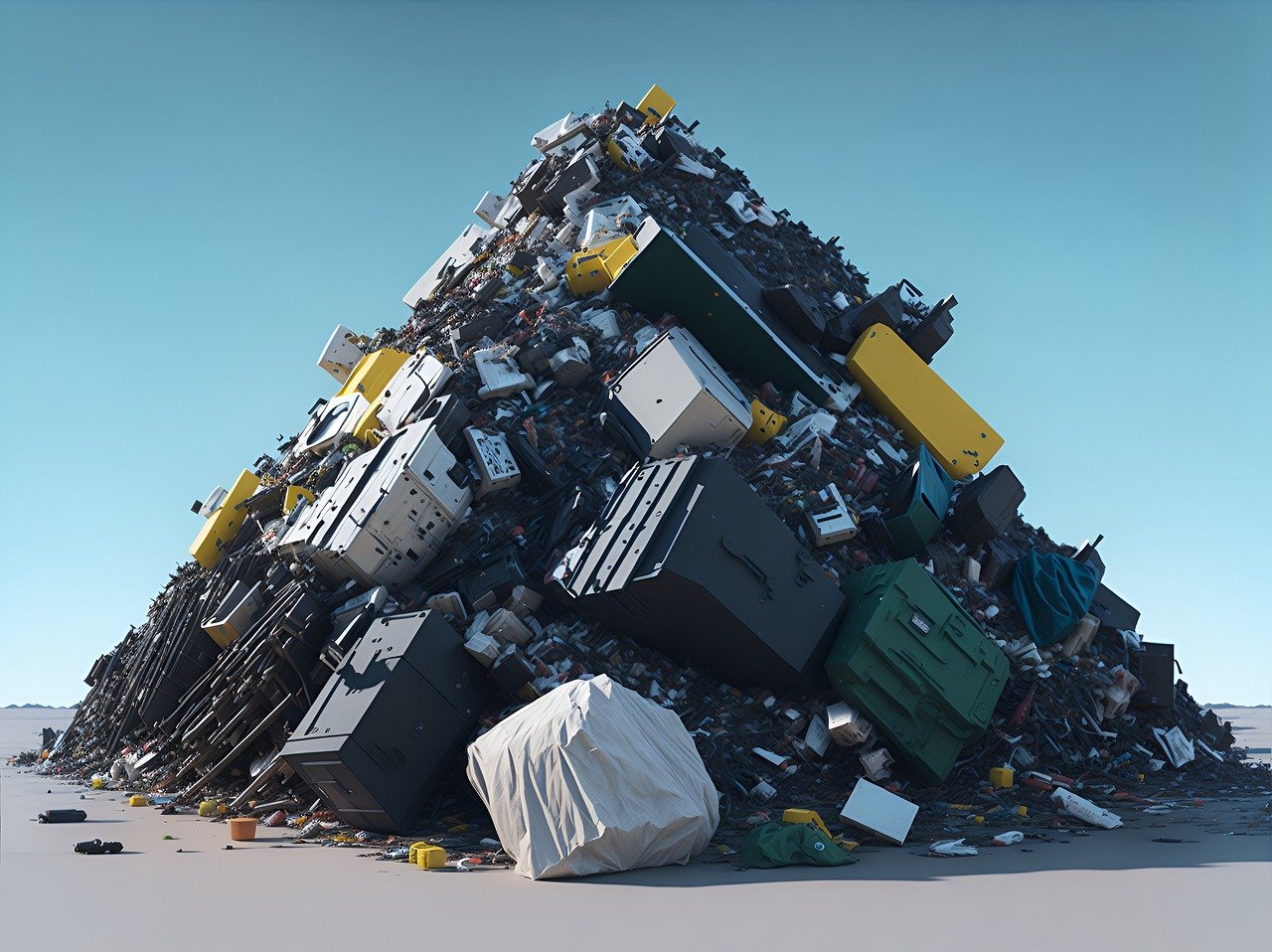Les cartouches de toner mal recyclées causent des dommages à l'environnement

Les particuliers et les entreprises ne peuvent se permettre d'ignorer l'importance de l'environnement. Nous sommes nombreux à faire notre part pour réduire les déchets et minimiser notre empreinte carbone, mais en faisons-nous assez ? L'encre et le toner des imprimantes constituent un domaine dans lequel nous ne pensons pas forcément à faire des choix écologiques. Les cartouches d'encre remises à neuf sont populaires auprès de ceux qui cherchent à économiser de l'argent et à réduire leur impact sur l'environnement, mais toutes les cartouches remises à neuf ne se valent pas. En ce qui concerne l'encre et le toner MICR ( reconnaissance magnétique des caractères) utilisés pour l'impression des chèques, l'utilisation de cartouches remanufacturées peut endommager à long terme les imprimantes MICR en raison de leur manque de compatibilité, et affecter la qualité d'impression et la sécurité des chèques. Le MICR étant une exigence bancaire de l'American Banking Association pour l'impression des chèques, il est extrêmement important d'utiliser une cartouche MICR OEM de la plus haute qualité. Vous pouvez lire toutes les différences entre les cartouches MICR OEM et les cartouches remanufacturées dans l'un des articles du blog "Know The Difference" de TROY ici.
Le processus de recyclage des cartouches de toner
Tout d'abord, récapitulons rapidement le processus de remise à neuf lui-même. Lescartouches MICR remises à neuf sont créées en remettant à neuf des cartouches OEM usagées par une tierce partie. Ce processus implique le démontage de la cartouche, son nettoyage, le remplacement des pièces usées ou endommagées et le remplissage d'encre. Ces cartouches peuvent être étiquetées comme "remanufacturées", "compatibles" ou "clonées", mais elles ont toutes un effet significatif sur la qualité.
L'idée est de prolonger la durée de vie de la cartouche et de réduire le besoin de nouvelles cartouches. Si les cartouches de toner MICR remanufacturées peuvent endommager les imprimantes et la qualité des chèques imprimés, le recyclage de produits tels que les cartouches d'encre est important en raison de leur composition, qui contient des métaux, du plastique et du verre. Les déchets électroniques de ce type peuvent être extrêmement nocifs pour l'environnement. La réutilisation de ces matériaux permet de préserver les ressources naturelles et de réduire les besoins en matières premières.
Cependant, le problème est que les cartouches remises à neuf vendues par des fournisseurs tiers ne sont assorties d'aucune garantie de qualité, de sécurité ou de mise au rebut correcte après utilisation.
Impacts environnementaux des cartouches de toner mal recyclées

Si le concept de remise à neuf est attrayant pour les entreprises désireuses d'économiser un peu d'argent, le diable se cache dans les détails. Les cartouches qui ne sont pas recyclées correctement peuvent finir dans des décharges, où elles libèrent des toxines nocives dans l'environnement au fil du temps. Plus de 375 millions de cartouches d'encre et de toner sont mises au rebut chaque année et finissent par se retrouver dans les décharges.En y regardant de plus près, cela signifie que 11 cartouches d'encre sont jetées de manière inappropriée chaque seconde aux États-Unis, ce qui équivaut à 1 million en une seule journée.
De plus, le temps nécessaire à la dégradation de ces cartouches est choquant. Pour qu'une cartouche se décompose complètement, il faut en moyenne entre 450 et 1000 ans. entre 450 et 1000 ans en moyenne. Cela signifie que les cartouches d'encre des générations précédentes qui n'ont pas été recyclées correctement se trouvent toujours dans les décharges, et qu'elles ne disparaîtront pas de sitôt.
Bien que les cartouches remanufacturées soient "recyclées", elles finissent par faire tout le contraire d'aider une entreprise à devenir écologique. En effet, ces cartouches sont vendues par des tiers qui ne disposent pas de programmes de recyclage ni de qualité d'impression, 90 % d'entre elles sont jetées de manière irresponsable.
Cela crée un véritable paradoxe, n'est-ce pas ? Dans le cas des cartouches d'encre MICR, comment les entreprises qui doivent imprimer des chèques, parfois des centaines ou des milliers par jour, peuvent-elles utiliser des cartouches MICR de qualité tout en respectant l'environnement ?
Recycler correctement les cartouches de toner avec HP et TROY
TROY et HP ont une solution pour vous. Les entreprises OEM comme HP ne se contentent pas de fabriquer des cartouches de toner de qualité, elles se sont également engagées à les recycler correctement une fois qu'elles ont atteint leur fin de vie. Le processus de recyclage en "boucle fermée" de HP Planet Partners permet de réutiliser et de recycler les équipements et les fournitures d'impression arrivés en fin de vie. Le partenariat de recyclage de TROY avec HP est un élément essentiel de notre activité depuis 20 ans, et il continue d'aider l'environnement à ne pas subir d'autres dommages.
Dans le cadre de ce programme, TROY et HP fournissent aux clients des étiquettes d'expédition prépayées pour renvoyer les cartouches vides en vue de leur recyclage. Les cartouches recyclées sont triées et désassemblées, et les particules de toner restantes sont éliminées de manière durable. Les morceaux de plastique et de métal deviennent des matières premières pour la fabrication de nouvelles cartouches de toner de haute qualité, tandis que les morceaux plus petits et inutilisables serviront à la fabrication d'articles de tous les jours.
Faire le bon choix avec TROY
Bien que les cartouches de toner recyclées soient potentiellement respectueuses de l'environnement et rentables, les dangers des cartouches mal recyclées ne peuvent être ignorés. En choisissant de recycler en toute connaissance de cause, en achetant des cartouches d'encre et de toner auprès de distributeurs responsables comme TROY, les consommateurs peuvent aider à réduire ces risques et contribuer à une industrie de l'impression plus durable. N'oubliez pas que la conscience écologique ne se limite pas à l'achat initial ; l'élimination et le recyclage responsables jouent un rôle crucial dans la réduction des dangers associés aux cartouches d'encre remanufacturées. Avec TROY, vous pouvez contribuer à mettre fin aux dommages causés à l'environnement.
Pour plus d'informations, visitez notre site web.
Articles connexes

Votre guide pour choisir le meilleur logiciel d'impression de chèques
Dans le monde rapide des affaires, l'efficacité est essentielle. L'un des domaines où l'efficacité peut avoir un impact significatif est celui de l'impression des chèques et des logiciels d'impression de chèques. En tant que..

5 avantages de l'impression avec des encres à séchage UV
Dans le secteur de l'impression, la rapidité et la fiabilité revêtent une importance capitale. Les clients veulent que leurs travaux d'impression soient réalisés rapidement et sans risque de dommages ou de bavures. L'entreprise..

5 Avantages d'une machine d'insertion de plis
Commençons ce blog par l'histoire simple de Mark, un responsable du service des comptes fournisseurs chargé des responsabilités financières d'une entreprise en pleine croissance. Au fur et à mesure que l'entreprise se développe, so..
Laisser une réponse